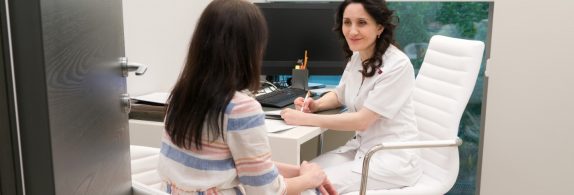International Women’s Day: let’s talk women in medicine
International Women’s Day is a time to celebrate the social, economic, cultural and political achievements of women around the world. The day also marks a call to action for accelerating gender equality, and raising issues that we still need to address, such as the future of women in leadership in medicine.
MedicalDirector’s Chief Clinical Advisor and GP, Dr Charlotte Middleton, discusses.
How far we’ve come
Throughout history, women have faced significant hurdles making inroads in health, science and technology, but have consistently proven themselves to be incredible contributors to medicine.
In 2017, for the first time in 60 years, female GPs outnumbered male GPs in Australia. Women accounted for 50.2 per cent of members at the RACGP in 2016-2017, up from 47 per cent in 2012-2013.
Medical Board of Australia data also confirmed women outflanked men in general practice, with 973 more registered female GPs than males as of March 2017 (19,965 women versus 18,992 men).
And a fairly proportionate split of the gender doctor population is a good thing. It gives the patients access to all the various perspectives available within healthcare.
Work-life balance
Despite the constant challenge and demands of being a doctor in today’s fast-paced health landscape, there’s more flexibility now than ever before for GPs who want to practice part-time. And it’s an increasing trend for female doctors.
The 2018 RACGP report revealed Female GPs are more likely to work part-time and, as such, represent 37% of the full-time service equivalent. Work-life balance is important for both men and women. And it is a constant challenge, for all genders.
But women are actively recognising the need to go part-time, both for our physical and mental health. And we now have greater choice when it comes to balancing work and family life. We’ve become more empowered to manage our own time, workflow and schedule, in far more flexible ways.
The specialist scale
Despite equality in the general practitioner space, women are still lagging in numbers in areas of specialty. A 2015 Government report revealed out of the 8,386 registered specialists in Australia, only 33% were female.
And unfortunately, reports of institutional bullying within specialist training still reflects a significant lack of support and gender bias, especially when it comes to young surgeons.
Let’s take the recent example of Dr Yumiko Kadota, a Sydney plastic and reconstructive surgeon who was made to work over 100 hours of overtime on top of her full-time shifts in only one month. She lived in the hospital and slept for only a few hours a night.
Now while both men and women specialists can suffer exploitation and hospital fatigue, when she complained, of being woken up for a non-emergency issue, the emergency doctor called her ‘emotional.’ She said:
Would he have called my male counterpart ‘emotional’? I tried to get back to sleep but I couldn’t. How dare he call me emotional!”
The final ‘chilling words’ she received from her head of department, despite being hospitalised for exhaustion, were ‘if you can’t handle the hours, maybe this isn’t for you’.
Worryingly, the Royal Australasian College of Surgeons stands by the long hours needed for specialist training.
“The RACS believes a 55-65 hour working week, spread across a seven-day period with sufficient uninterrupted breaks during that time, is appropriate for trainees to gain the knowledge and experience required by the training program,” the college’s submission into workplace fatigue and bullying in South Australia stated last month.
Moving forward, if we want to be serious about mental health, burnout and the future of our specialists, male or female, we need to start implementing far more effective fatigue minimisation practices, bullying and harassment protocols and safer rostering. At the same time, specialists in training need to have the right support groups and mentors to help guide their journey towards fulfilling their career goals and ambitions.
The gender pay gap
Last year, a comment by a US doctor in the Dallas Medical Journal caused a viral media stir about the gender pay gap in medicine, but the heart of the debate missed one fundamental premise: prioritising wellbeing.
In an article published in the Dallas Medical Journal, US doctor Gary Tigges said women deserve to be paid less than men because they don’t work as hard as their male colleagues.
“Yes, there is a pay gap,” Tigges wrote. “Female physicians do not work as hard and do not see as many patients as male physicians. This is because they choose to, or they simply don’t want to be rushed, or they don’t want to work the long hours.”
“Most of the time, it is because their priority is something else, family, social, whatever,” he continued. “Nothing needs to be done about this unless female physicians actually want to work harder and put in the hours. If not, they should be paid less. That is fair.”
Tigges’ comments formed part of a wider feature about the ‘problem’ of women in medicine, which discussed a recent report that found that female practitioners in the US earn 28% less than their male counterparts. And almost immediately, social media erupted with hundreds of doctors and health commentators taking to the social platform to criticise Tigges for his comment, even though he had tried to explain his comments had been misconstrued.
But let’s take gender out of the equation for a minute, and focus on why the comment ‘not seeing as many patients’ is fundamentally flawed.
The practice of medicine, and the ‘worth’ of a healthcare professional, male or female, shouldn’t be measured by how many patients you can cram into a day, it should be measured by the quality of care you offer to your patients, to enable better health outcomes.
The future of medicine starts with a holistic approach to keep patients well, rather than simply try to treat them when they’re sick – and that’s going to require more than a six-minute doctor’s appointment. So who cares what the number of patients is that you see per day? It’s the quality of care you’re providing to your patients.
It’s time we stop the finger pointing as to ‘who saw less patients’, and take a look at actual health outcomes. Who is actually showing less patients going to emergencies, or less patients going to specialists? Let’s look at those stats, not just the stats of how many patients walk in and out your door.
Where we’re heading
As we continue to build momentum around gender diversity, and open debate about its importance and value in the medical profession, the future looks exciting. But at the same time, we need to develop the right support groups, awareness campaigns, educational programs and resources to help pave a better, more equitable working culture for all health professionals now, and for the years to come.









